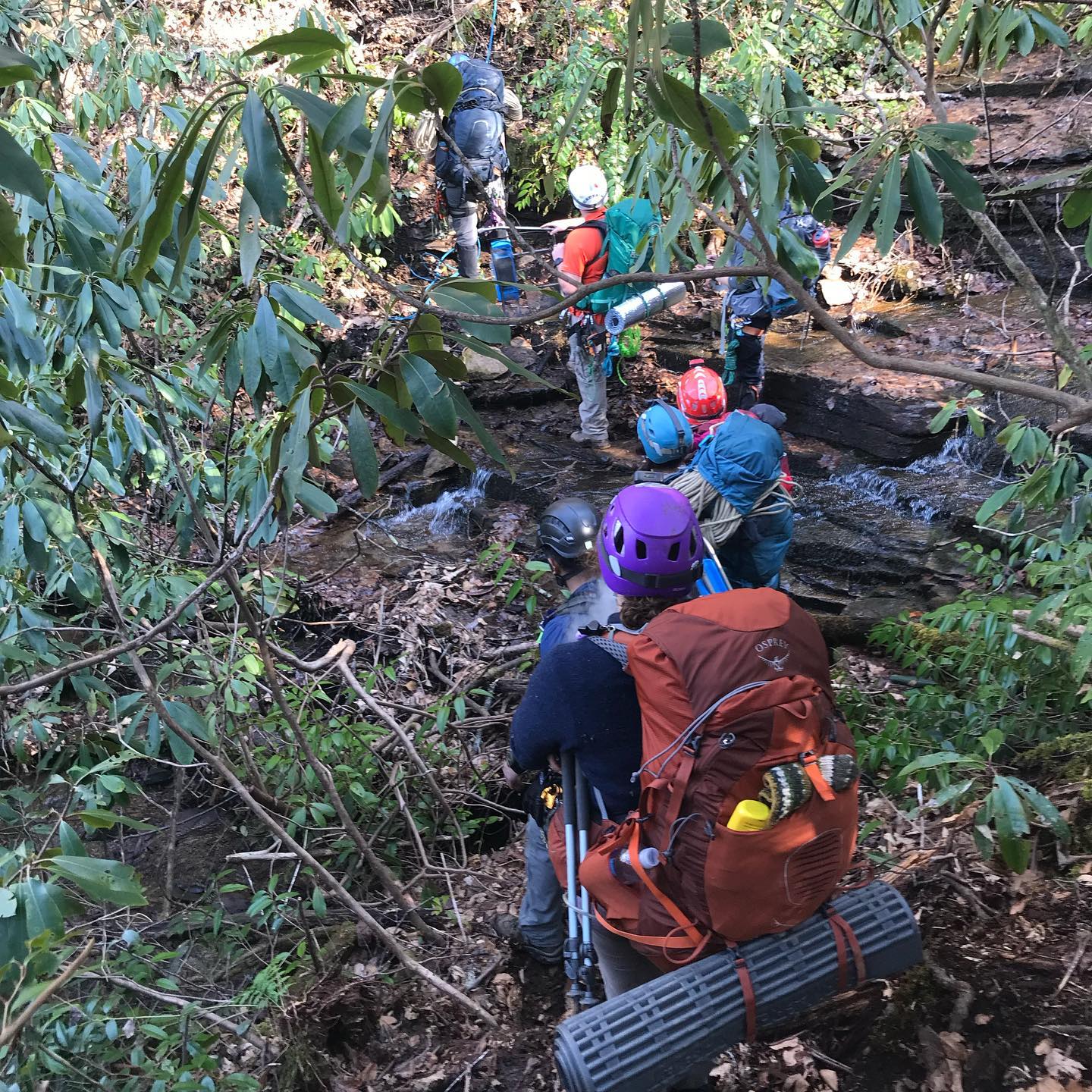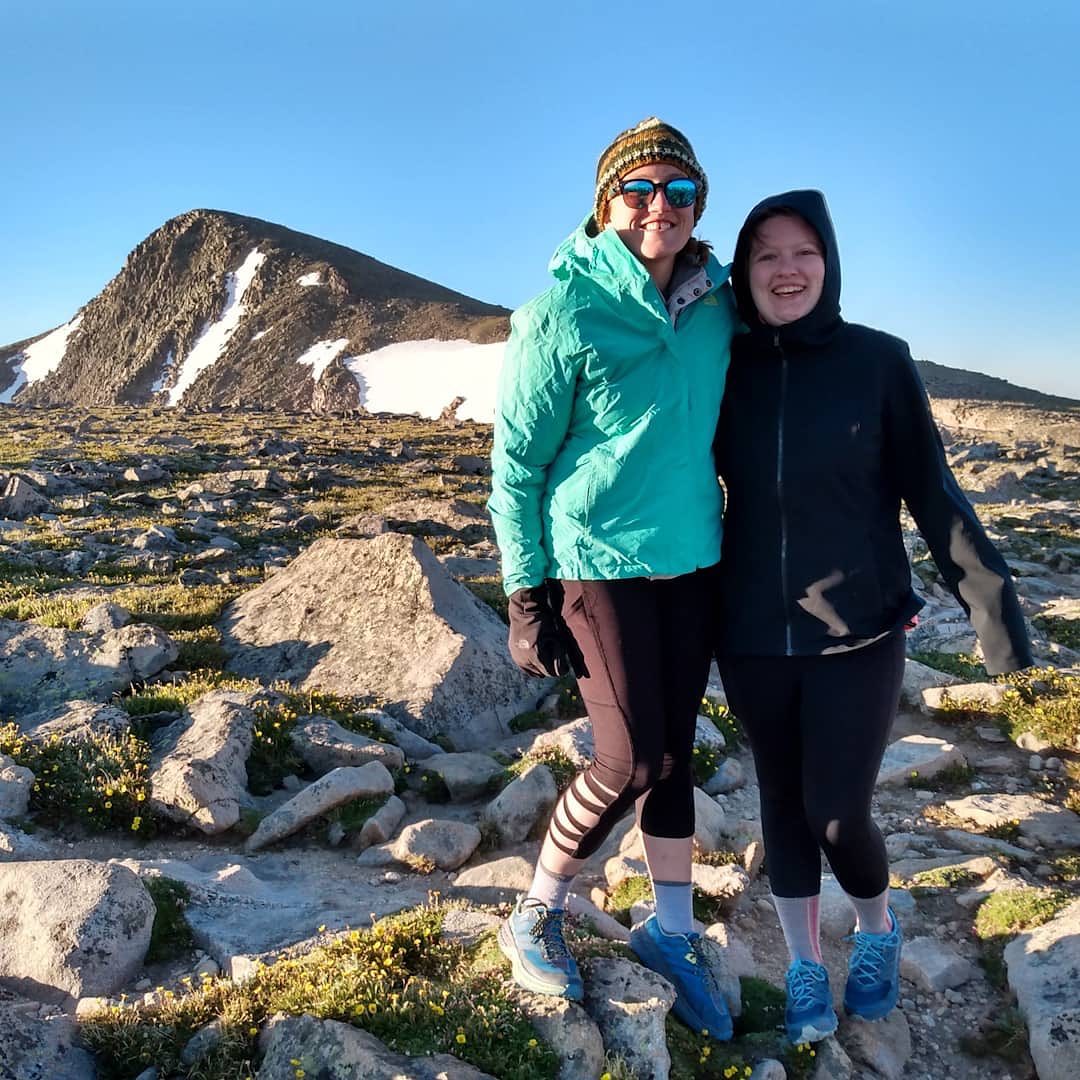Written by: Account Manager Lysianne Peacock
Our Hot Take series is where we hand over our blog to one of our team members and let them wax poetic about something they are passionate about outside of work, if you’re new to it be sure to check out our last two features HERE. This third installation is from Account Manager and Search and Rescue volunteer, Lysianne Peacock. Lysianne shares how to prepare for adventures in the outdoors to be safe this hiking season.
I recently came across a post from Keep Nature Wild titled “What You Think You Need vs. What You Actually Need.” I know the intention of this post was to showcase that you don’t need to shell out big dollars for fancy gear to go hiking, but it missed the mark in terms of hiking safety. While you don’t need the best, most expensive gear to get out in the woods, you definitely need a lot more than sneakers, water, a phone, and a hip pack.
In September of 2022, I packed up my car with hiking gear and my dog to set out on a solo 3.5-mile hike in the Linville Gorge Wilderness. As I was packing, my gut instinct told me to pack for the worst-case scenario. In my pack was extra water, food, layers, and an extensive first aid kit. I was prepared to spend the night in the woods in case anything went wrong. I even texted a friend a complete itinerary of my hike, the route, and expected return time. Six hours after I left Asheville, I was being walked off the trail by a Search and Rescue (SAR) team after rolling my ankle on the trail and being unable to walk myself and my dog back to the car.

I share this story because, as a SAR volunteer and outdoor adventurer, I am no stranger to what could happen when you adventure unprepared. From improper equipment, poor planning, navigation mishaps, and adventuring outside your physical limits, anyone can become a search and rescue victim, including me.
Let’s explore how to get ready for an adventure so that you can enjoy it safely and be prepared for when things go wrong.
The Unexpected Plot Twist: Adventures Gone Wrong
When you go for a day hike, you never expect to spend the night in the woods. However, any adventure can turn into a misadventure. Earlier this year, a group of 10 in Haywood County, NC got unexpectedly lost on their hike. Unprepared for the falling temperatures as the day waned and night approached along with lack of food and proper clothing, the adventurers were suffering from fatigue and dealing with leg and ankle injuries. After a grueling 11-hour ordeal, the group was rescued. This incident is a stark reminder that even seemingly simple hiking trips can turn into life-threatening situations when preparation is neglected.

Packing for Success: Your Adventure Arsenal
Embarking on an adventure is like stepping into a world of limitless possibilities, but amidst the allure of the unknown, one crucial factor often determines the line between triumph and turmoil: preparation. A combination of research, proper gear, and mindset will equip you with the knowledge and tools you need to set out on your next outdoor experience with confidence.
Think of researching for an adventure like preparing for a job interview. Just as you would gather information about the company, role, and industry before an interview, conducting research before a hike involves gathering essential knowledge about the trail, terrain, weather conditions, and potential challenges.
Planning
One of the most crucial steps in ensuring a safe and enjoyable outdoor experience is knowing where you’re going and sharing your hiking plans with a trusted friend or family member. When you provide a friend with your detailed itinerary, including the trail you’ll be on, your expected return time, and any alternative plans you may have, you create a safety net. If something goes wrong or you encounter unexpected delays, this information allows rescuers to locate you more quickly and efficiently. It’s a simple yet often overlooked practice that can make a world of difference in keeping you safe while exploring.

Adventure Essentials
Packing is all about striking the right balance between preparedness and simplicity. The 10 Essentials is a great place to start, but remember, every hike is different.What you pack could mean the difference between life and death when things go awry. Here’s a list of what I bring on most of my adventures so I am prepared for any situation:
- Clothing and Packs – Start with the essentials like sturdy footwear, weather-appropriate clothing, and a good backpack. The weather, duration, and intensity of your adventure should all be considered when packing clothing layers. Be sure to include moisture-wicking materials, rain gear, and extra socks while avoiding cotton. When cotton gets wet, it stays wet, increasing the risk for developing hypothermia.
- Fuel and Hydration – Extra food and water are vital, so pack lightweight, high-energy snacks,and a reusable water bottle or hydration system. Bring a water filter, purification tablets as a backup.
- First Aid Kit – Your first aid kit should include adhesive bandages, antiseptic wipes, gauze pads, adhesive tape, tweezers, scissors, blister treatment, pain relievers, and any personal medications you may need during your hike.
- Multi-tool or Pocket Knife – A versatile tool for cutting, opening, repairing gear, and handling a variety of unexpected situations on the trail.
- Fire Starting Kit – A fire starting kit is a seasonal option. If trekking in the winter, having a means to start a fire is essential.
- Navigation – Don’t just rely on your phone for navigation. Phone batteries can and will die. Get comfortable with a map and compass so when your phone dies, you won’t get lost.
- Lighting – Bring a headlamp for emergencies (plus extra batteries) and a flashlight.
- Sun Protection – Sunglasses, sunscreen, and a hat are crucial for protection.
- Extras – And finally, always have a fully charged phone, a power bank, and any necessary permits or documentation.
Keep your pack organized and as lightweight as possible to ensure you’re ready for whatever surprises your adventure may bring.

Empowering Safe Adventures: Action Steps for Adventure Preparedness
The essence of adventure lies in its unpredictability, and the line between triumph and turmoil can be thin. Whether you’re a brand passionate about promoting outdoor gear or an individual seeking to inspire fellow adventurers, advocating for adventure preparedness is a shared responsibility. By taking action, we can all effectively spread the word about adventuring prepared. If you want more tips on adventuring safely, be sure to check out our Instagram post on the 5 Action Steps to being better prepared for the trail!
